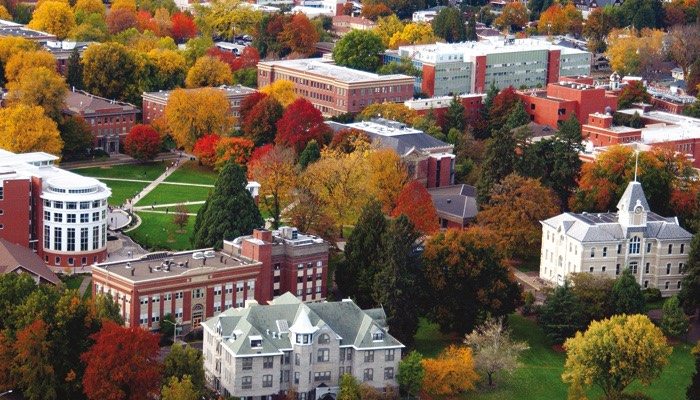
Steve Canty
Director, GRS | Corteq
(858) 433-0441
scanty@fv2.d32.myftpupload.com
Not all college towns are created alike when it comes to commercial real estate, but most of them tend to do better than comparable cities by geography and size without institutions of higher learning, according to a recent Reis report.
Tertiary apartment rent growth in university metro areas, where students and others have access to restaurants and other amenities, was the highest last year of all submarkets examined by the research firm. It was closely followed by the increase in apartment rent growth in the core part of college towns. The lowest increase (though still an uptick) was in tertiary student housing rents, and the second-slightest rise was seen in non-university submarkets of metro areas.
On a geographic basis, looking purely at student housing, rents are highest in the West and Northeast, however, the highest increase in 2017 was in the Midwest, which saw a 3.7 percent jump.
Over the last two years, student-housing rent growth was highest in Minneapolis, around the University of Minnesota, which saw a 15-percent rise. It was closely followed by the 14-percent jump in San Luis Obispo, Calif., the home of California Polytechnic State University. On the apartment side, considering rentals in university submarkets, Reno saw a 28-percent boom near the University of Nevada, followed by the West Philadelphia neighborhood, near the University of Pennsylvania.
By contrast, from an overall market standpoint, Reno apartment rents rose 8.8 percent during that time, according to a Kidder Matthews report. In Philadelphia as a whole, asking rents rose four percent year over year during last year’s fourth quarter, says Cushman & Wakefield.
Meanwhile, it looks as if commercial real estate surrounding universities is going to be a good future bet, given projected population numbers. Bisnow recent pointed out data from Statistica projects that there are just under 20.7 million students enrolled this year, and that there will be an increase to just under 23 million by 2026. Walmart and Amazon have also rolled out similar concepts.
Some retailers have certainly caught on. One example is Target, which has been rolling out smaller-format stores, around 20,000 square feet, on or near college campuses over the last few years across the country. The retailer was on track to have a total of 45 by the end of last year and to have more than 130 of these units, which specialize on food and convenience items, by the end of 2019.
About GRS Group:
GRS Group is a leading provider of commercial real estate (“CRE”) services worldwide. With offices across the United States, Europe, and affiliates around the globe, GRS Group provides local market knowledge with a global perspective for institutional real estate investors, occupiers and lenders worldwide. The GRS Group team has evaluated and advised on over $1 trillion in CRE transactions.
Through the company’s proprietary management process, Global Services Connection, GRS Group delivers an integrated suite of services including Financial Advisory, Transaction Management, Assessment and Title Insurance. We provide a single point of contact, capable of leveraging the GRS Group portfolio of companies and delivering customized solutions to assist our clients in achieving their investment goals.

